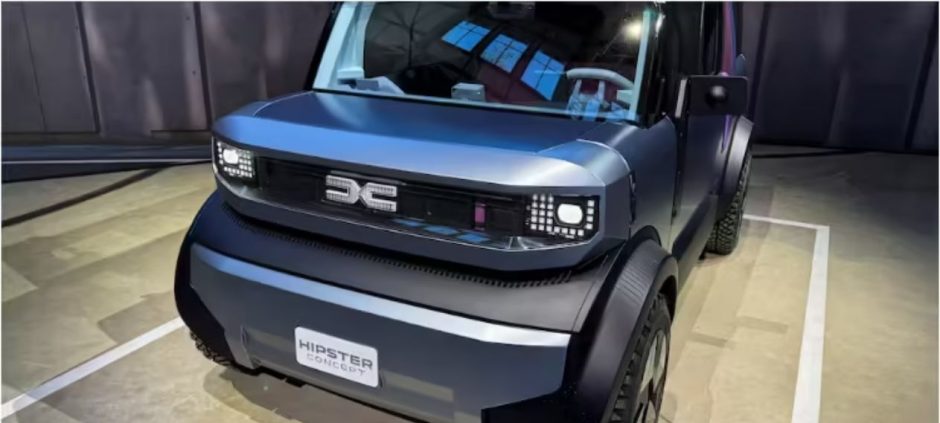Dacia has unveiled the Hipster, a small electric car designed to take on low-cost Chinese mini EVs in Europe. Compact, affordable, and practical, the Dacia Hipster aims to redefine city driving with simplicity and efficiency.
The new Dacia Hipster measures just three metres in length and weighs under 800 kilograms. It can reach a top speed of 90 km/h and travel about 150 km on a single charge. Built for urban use, it offers just enough range for daily commutes while keeping the price low.
To achieve its budget-friendly target of under €15,000, Dacia has kept the design minimal. The Hipster includes canvas seats, manual windows, and basic interior materials. Even door handles are replaced with fabric straps to reduce cost and weight. Despite its simplicity, the car retains a clean, modern look.
Dacia says the Hipster could enter production if European regulators approve a new small-vehicle category. This would allow lighter vehicles with fewer mandatory safety features, similar to Japan’s Kei cars. If approved, the Hipster could become one of Europe’s cheapest electric vehicles.
The project represents Dacia’s response to the growing competition from Chinese electric minis, which are rapidly gaining popularity across Europe. Models like the Wuling Hongguang Mini EV have shown that compact, low-cost EVs can succeed with the right price and practicality. Dacia aims to offer a locally built alternative that supports European manufacturing.
Industry experts believe the Dacia Hipster could open a new segment in the electric vehicle market. While it won’t rival high-end EVs in power or range, it offers a sustainable and affordable option for daily city travel. Production plans will depend on regulatory approval and consumer demand.
With rising car prices and urban congestion, the Dacia Hipster may be the right car at the right time — small, efficient, and made for Europe’s busy streets.
Also read: Australian Doctors in Gaza Recount Horrific Bloodshed, Trauma











